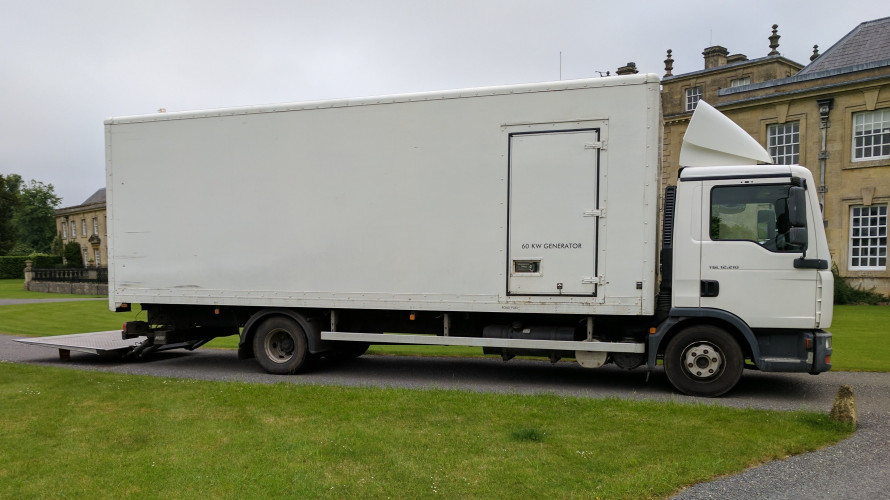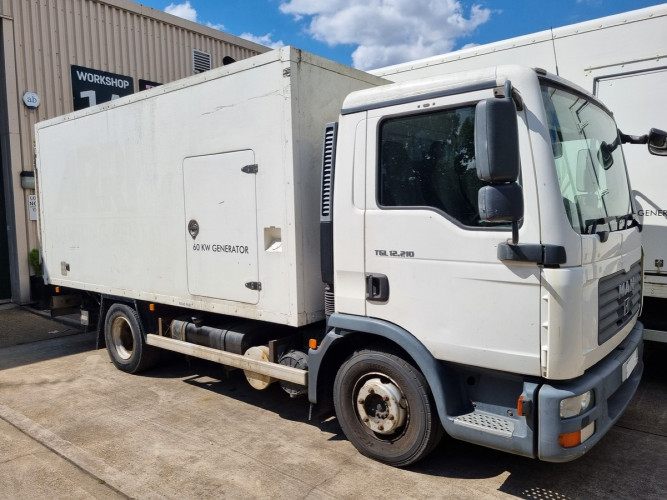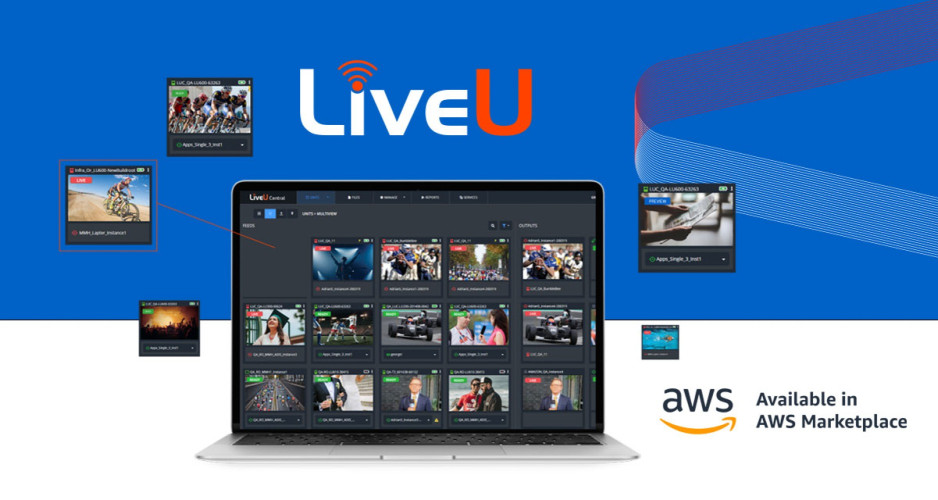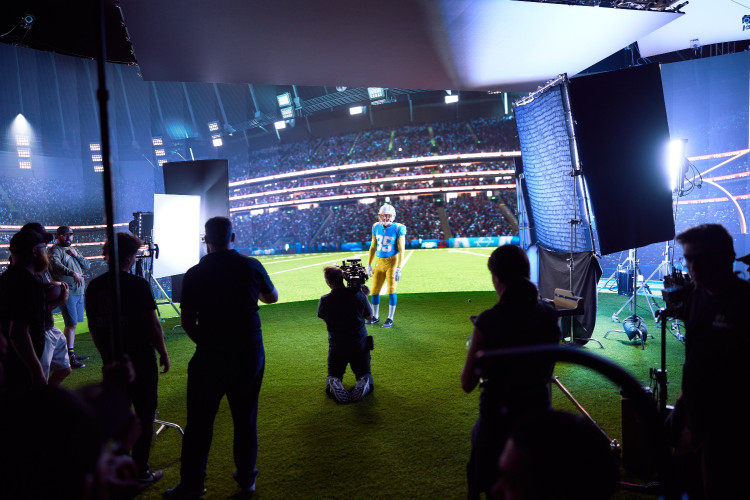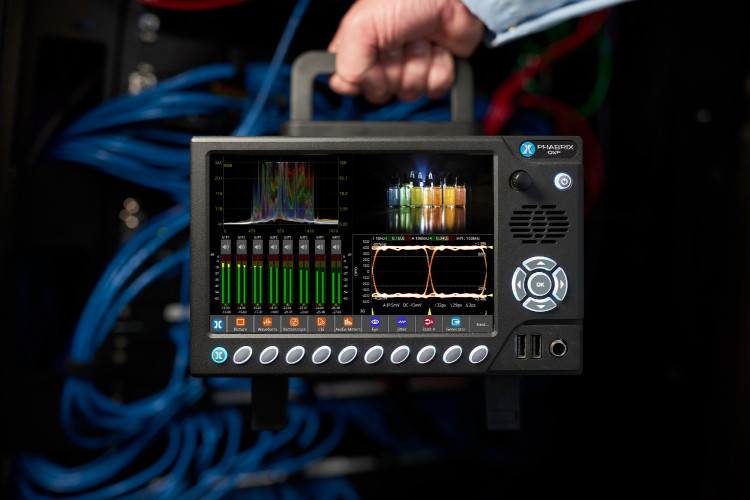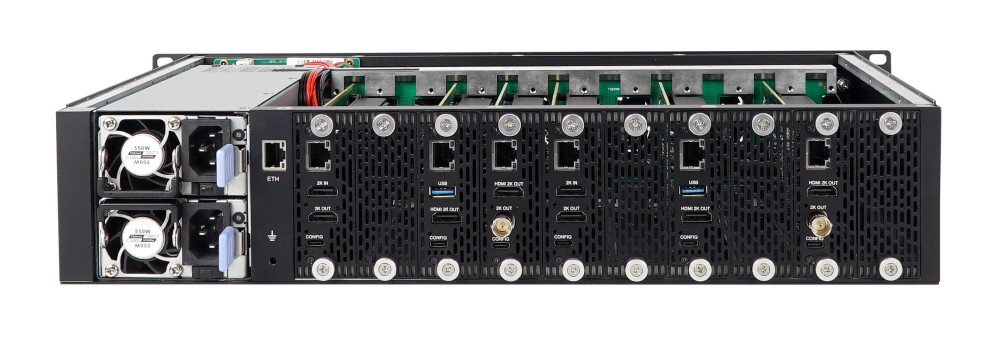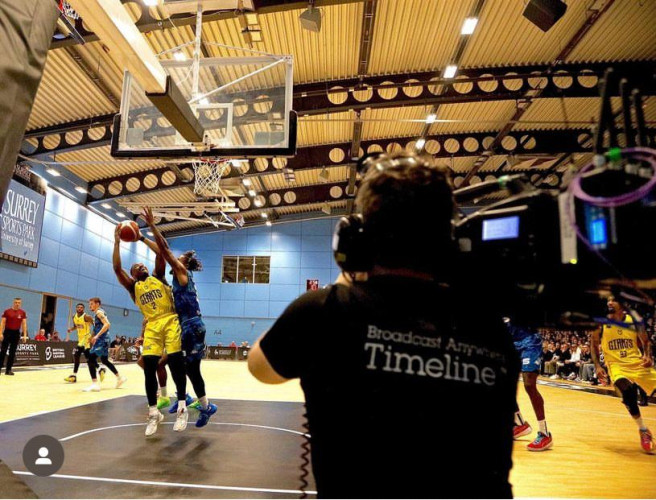Game, Set and Media Management

Author: Bob Pank#
Published 1st August 2010
A week into Wimbledon and my chances of getting there this year seemed to be dwindling fast. A late call on Friday afternoon though from Timeline TV rekindled my hopes of not only seeing a bit of tennis but getting an exclusive tour around the Wimbledon Broadcast Centre. Always one to grab the opportunity to see both tennis and kit in action my next stop was SW19 on Monday morning, week two of the tennis championships.
Timeline Television are UK Leaders in tapeless broadcast systems, supplying programmes such as the World Cup, Olympics, Wimbledon, The Open Golf and Party Political Conferences with 20 years of industry experience working with the likes of BBC, ITV, Channel 4 and Sky to name a few and my tour guide for the day was Stephen Davis, Commercial Director of Timeline TV.
With their experience and versatility across a wide range of projects they are able to provide Editors, VT Operators and Engineering Managers, plus of course the latest in equipment and complete broadcast solutions.
At Wimbledon Timeline supply a tapeless content system to IMG, the clubs media representatives, the BBC and other broadcast partners. At the heart of the solution is the EVS XT[2] with the front end [IP] Director (IPD), an integrated suite of software with versatile control of the XT[2] Servers audio and video channels. Running on a Windows based workstation, IPD allows the user to easily ingest, log, manage, search, track, edit, create clips and highlights, browse and ultimately playout any video or audio content instantly.
Timeline supply and maintain over 40 IPD workstations around the Broadcast Centre that has grown from portacabins to a permanent three level TV centre. The labyrinth semi surrounds court 18 with a warren of suites and studios hired by the likes of BBC Sport, Tennis Channel, Star Sports, NRK, NBC, Channel 9, and other broadcasters covering the event. Most having a window out to the court for scenic interviews and match discussion in the confines of their own area.
The metadata for live events such as Wimbledon, where 9 courts are being televised, is crucial to give producers and editors the access they need for replays, highlights and special reports, as well as selecting keyword specific terms, words and phrases
Rewind a few years, we are not talking many years here, and IMG and the BBC recorded the tennis on tape and logged the event data on paper.
The change from paper logs to metadata recording has been an evolving and great change for the producers as well as editors and it’s not one that has come easily with many concerns over data security and accessibility. When you think though that now this data is made available to multiple broadcasters on a shared platform, then suddenly the economies make sense with unnecessary repetitive data being made redundant.
The EVS work stations allow the editors to browse any matches and select shots from certain days, courts, players, break points, aces, speed of serve and more interesting player reactions such as “Federer waving” and “Nadal fall”. The non-score data is all added by the BBC loggers who each focus on a court, concentrating on the images and adding metadata as the match unfolds.
The loggers don’t need to worry about the score data or even the start, end, breaks points and aces as this data is all supplied to Timeline from IBM’s IDS system and automatically added to the log. Again this leaves the creative thinking producer to be logging creative information that can be used for transmission.
The loggers can also give star points to certain scenes of a match which can then quickly be selected, making a highlights show or special report a breeze. Data is also colour coded to add further ease of use, with the start of a match in green, the end in red and break points being yellow to instantly give the ability to scan through a match quickly. The data shown really is endless.
A search on “3 star ARRI” will give some powerful slo-mo shots, which for a features show was previously a searchable, time consuming process. I had seen a bit of tennis the previous week on TV so thought a quick test of the system would be to enter “butterfly” into the EVS IPD search box...... an eagle eyed producer had obviously seen the same shot (and hence why it made it to air in the first place!) as instantly we were offered two slo-mo options to view the death defying flight of the butterfly as it avoided the players foot, very impressive and a wonderful use of HD slo-mo.
Within the logging area are also the BBC tape archive machines. These tapes are not used for any editing or transmission but are purely being tagged ready for the BBC archive library.
The BBC archives every second of every match to tape in the extension of their tape library situated for the duration at their Wimbledon tape library suite. 9 courts per day are televised in week one, dropping to 7 in week 2 and 8 hours per day per court with tape ident info stamped in metadata for additional ease of retrieval.
BBC interactive are also represented in the broadcast centre where on the press of the red button the viewer is given the options to view up to an extra 6 channels (matches on courts in this case).
The BBC interactive room, also kitted out by Timeline, utilises a Panasonic mixer with built in multiviewer, a Blackmagic Videohub 72 x 144 video matrix, EVS for playout and a voice over booth for continuity links on both web and interactive “red button” feeds. The conversation changes in here to a quick few tips from voice over presenter Rob Curling suggesting Harry Rednapp and Stuart Pearce as the next England management team (by the time this reaches print you just never know!!) This is typical of the relaxed atmosphere that struck me for the entire tour, there were no panics, no one rushing about, no raised voices....can only be a sign of good people working with well selected kit.
Timeline’s passion is apparent bringing organisations together with IMG and the BBC sharing content and data. IMG also supply the world feed and use the IP Director system with Final Cut Pro to produce the world highlights feed. This is transmitted at 2130 every night of the tournament and is taken by 80 countries.
We make our way down to basement level where the heart of the server system lies with 6 EVS XT servers operating for low resolution, (made available to all workstations for quick match/shot selection) and 9 for high resolution. All of the action is presented on the IPD terminals in low resolution and upon selection the high resolution footage is grabbed from the server for transmission. All the high and low resolution content is continuously backed up to a 100 Tbyte Nearline storage pool.
Wimbledon Club takes away this archive set after the tournament and it is managed at IMG’s Media House for use throughout the year.
Within the machine room Timeline demonstrate an eye for the future with beta testing going on within the equipment bays - not products being used in earnest but being put through their paces in a real world use for implementation next year maybe.
The tour concludes back on the Broadcast Centre roof overlooking court 18 where number 12 seed Berdych takes Brands to a 4 set victory; the sun is shining, the data is being logged and play continues.



